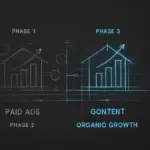This week, I spent 45 minutes on an email thread about a minor logistical issue at one of our saddle brands. It wasn’t urgent or complex, but by the time I surfaced, my focus for a critical Q3 planning session at JvG Technology was noticeably diminished.
This wasn’t a time management failure; it was a capital allocation error.
I’ve come to realize the most valuable, non-renewable resource I manage isn’t time or money—it’s focused attention. The stakes are high: with over 53% of founders reporting burnout and 56% suffering from decision fatigue, mismanaging attention isn’t just inefficient; it’s a direct path to failure.
Founders don’t run out of hours in the day. We run out of the mental energy needed to make high-quality decisions. That realization led me to rethink my entire approach. Instead of managing my calendar, I began managing my attention like a balance sheet.
My framework is simple: I treat my daily cognitive output like a finite capital budget, divided into three distinct asset classes. This isn’t just time blocking; it’s a system for matching the quality of my attention to the leverage of the task.
The Attention Capital Framework
1. Strategic Capital (StratCap): The 20%
This is my prime, high-focus attention, reserved for activities with compounding returns. It’s the equivalent of a long-term capital investment.
For me, this means designing new automation workflows, mapping out multi-year strategy for JvG, or deep work on core product architecture. This block of attention is non-negotiable, typically scheduled for 90–120 minutes first thing in the morning when my mind is clearest, and protected from all notifications and interruptions. Investing my best attention here is the only way to build systems that create future leverage—a core tenet of Systems Thinking in Practice.
2. Operational Capital (OpCap): The 60%
This is the energy required to run existing systems: team check-ins, project reviews, and client communication. It’s essential but prone to creating what I call „attention debt“—low-value tasks that consume high-value focus.
Efficiency and delegation are the priority here. I bundle these tasks, use strict agendas, and heavily leverage our internal Human + Automation playbooks to minimize cognitive drain. OpCap is where founders often burn out, mistaking activity for progress. My goal is to handle these operational demands without letting them bankrupt my strategic reserves.
3. Speculative Capital (SpecCap): The 20%
This is my R&D budget for attention, allocated to unstructured exploration: reading technical papers, testing a new piece of software, or simply thinking through a nascent idea without a defined goal.
While crucial for innovation, it’s also a high-risk asset class. Without a strict budget, speculative thinking can easily bleed into the entire day. I cap this at a specific block of time, often in the late afternoon, to prevent it from derailing high-leverage work. It’s a deliberate investment in future opportunities, managed with the discipline of a venture portfolio.
Treating attention like capital reframes the entire workday. A request for „five minutes of my time“ is no longer a temporal question; it becomes a capital allocation request. Does this task warrant an investment of my prime StratCap, or is it an OpCap item to be handled more efficiently later?
This way of thinking is a powerful defense against the cognitive biases that plague founders—especially the tendency to react to the urgent rather than focus on the important.
This system isn’t about productivity; it’s about sustainability and leverage. Time is a commodity that resets every morning. Attention, once spent, is gone forever. By managing it with the same discipline as a financial portfolio, I ensure my most valuable asset is always invested where it can generate the highest possible return: building the systems that scale.




